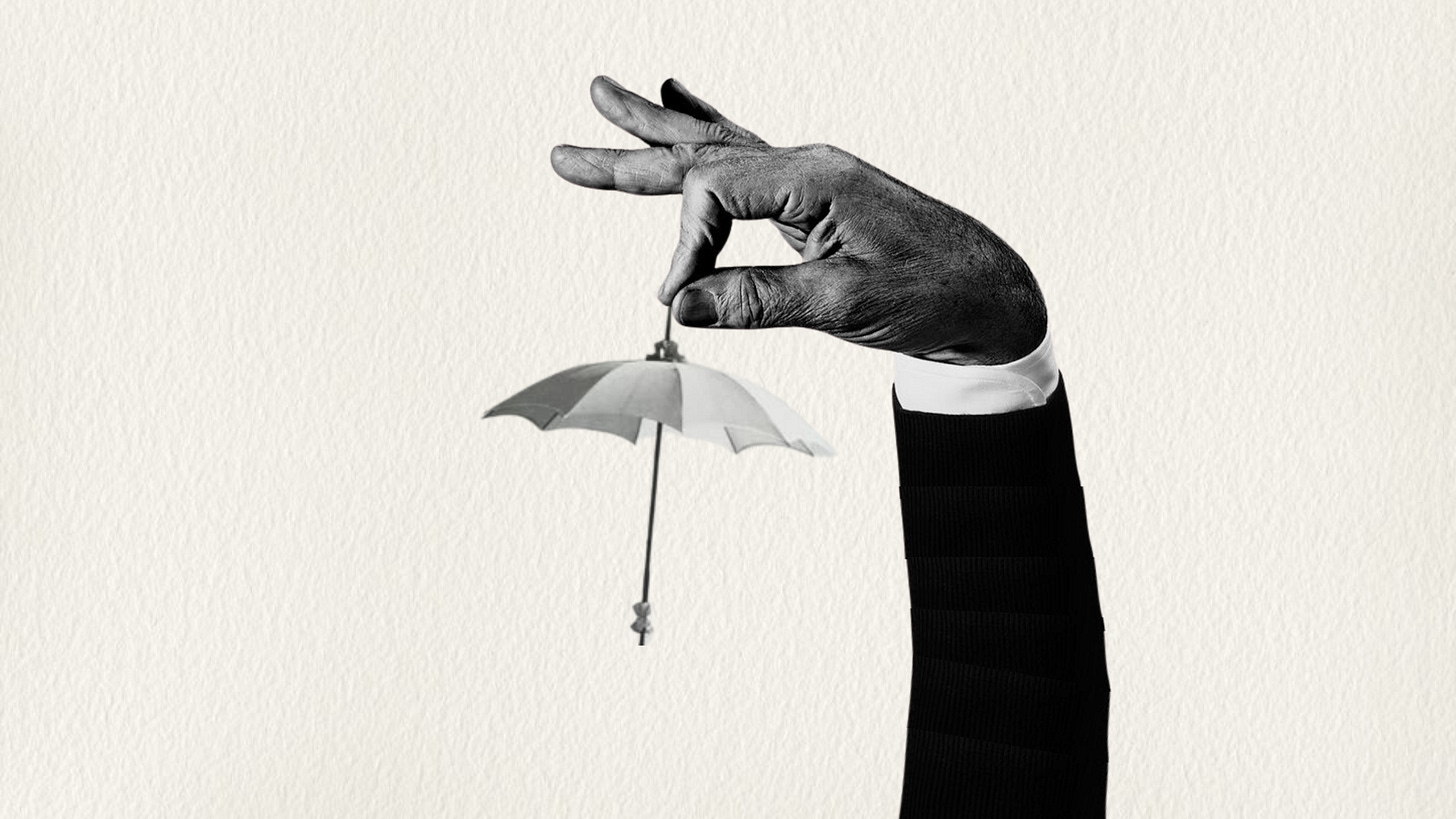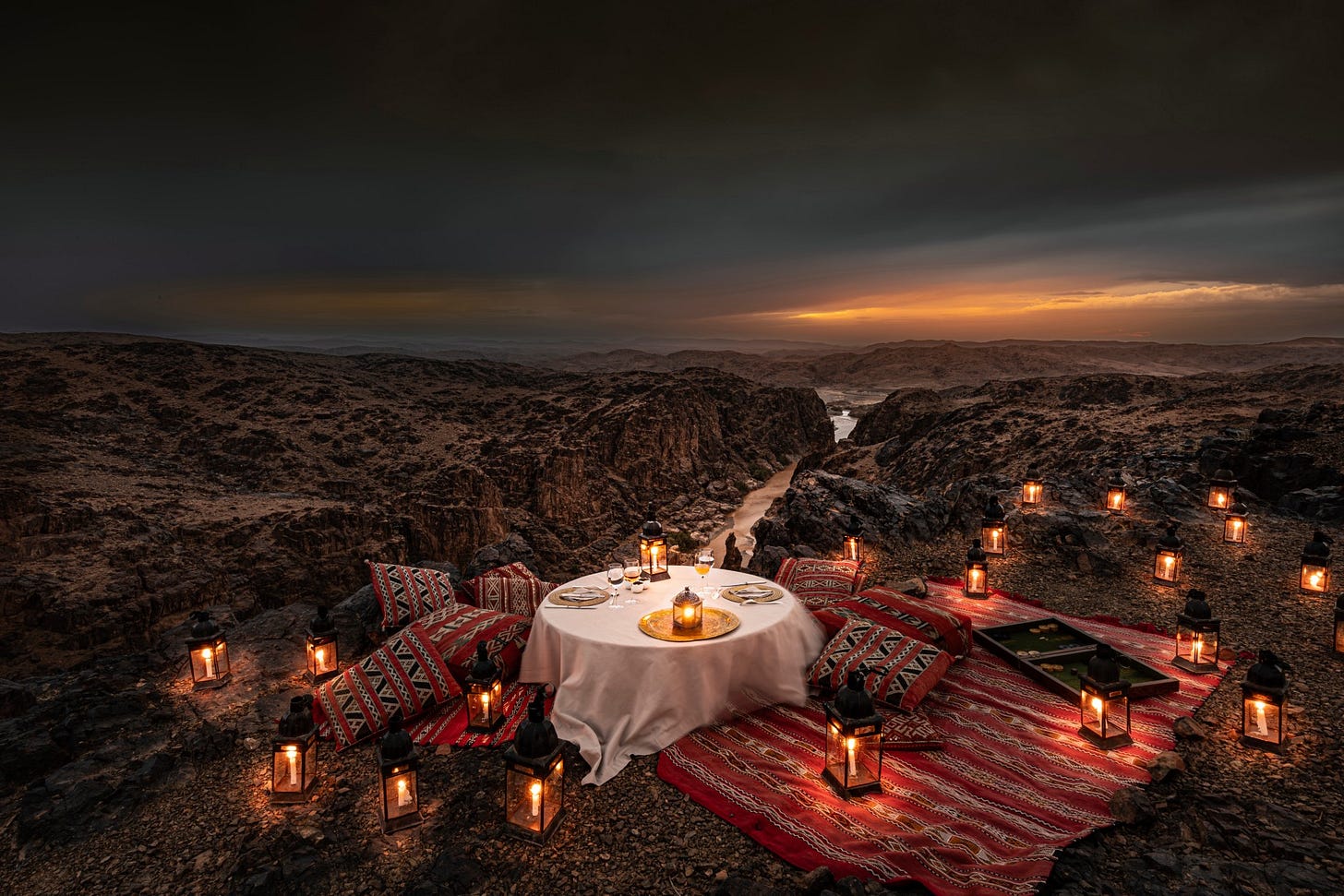Let’s rewind a bit. It’s April 2017, and René Redzepi, the Danish chef behind the Noma empire, launches a seven-week pop-up in Tulum. The setting: a handful of wooden tables in the heart of the jungle, with dinners enjoyed barefoot in the sand and heads tilted towards the stars. You see where we’re going with this?
Anyone else might have panicked at the idea of planning “just in case” logistics for tropical downpours that would make outdoor dining impossible. But Redzepi turned the challenge into a creative edge, and made Plan B the most exciting part. The result? The first question guests asked when they finally scored a seat at the table wasn’t about the food. It was: “Did it rain for you?”.
Rain anxiety runs deep in hospitality. We all have memories of glorious places held hostage by torrential downpours: Giulia, playing endless games of Uno at The Datai Langkawi in Malaysia. Me, fighting off cabin fever with bodyboarding sessions at Lost Lindenberg in Bali. Or Margot Robbie, stuck in the gym - with Barack Obama as a neighbour - on honeymoon at The Brando in French Polynesia.
Since launching Zero, we’ve had several hoteliers reach out with the same goal: extending the season. The challenge? Figuring out how to handle rainy spells, unbearable heat, or snowless winters.
The issue is as big as the financial upside. The digitalisation of work is creating new windows of opportunity. And what better way to attract DINKs (double income, no kids) those high-spending, flexible travellers, than with a compelling off-season programme?
When faced with sceptical hoteliers, Giulia and I always bring up the same example: Lily of the Valley. Set in La Croix-Valmer, once the ugly duckling of the Saint-Tropez peninsula, this 53-key hotel is open all year round and boasts off-season occupancy rates that would make the French Riviera blush. We’re talking 65% in February and 75% in March, according to figures shared at PURE in September 2024.
The secret? Year-round wellbeing programmes focused on better aging, detox, fitness and weight loss. Monthly masterclasses from October to April with leading wellness experts. Smart, well-branded offers.
This success story has had ripple effects: over a dozen new nursery school spots opened in the village. A fisherman and a farmer are now able to work year-round. And the local winter economy has truly come to life. The brand has even announced the opening of a chalet-hotel in Courchevel for December 2027. We’re keen to see how this model translates in a mountain setting.
But let’s take a step back. Isn’t the very idea of seasonality starting to feel outdated? Beyond new work rhythms and economic logic, even nature itself is shifting: springs are stretching, winters are drifting...
We asked Thierry Teyssier, the visionary hotelier behind Dar Ahlam and 700,000 Heures, what he thinks. And here’s what he had to say:
He found the answer. When travellers ask about the best time to book a stay at Dar Ahlam, his reply is always the same: it all depends on your mindset and curiosity. Looking to celebrate with locals? January, for the Amazigh New Year. Almond trees in bloom? February. A bed beneath the stars? July. Date harvest season? September.
While there are still minor price variations from one month to the next, the nightly rate will soon be the same year-round. A decision that’s as strategic as it is efficient, crafted specifically for this kasbah and its surroundings, tucked deep in the Skoura palm grove.
Keen to help shape a new era - one that’s less obsessed with seasonality?
At Zero, we help you craft bold, off-season-ready programmes and oversee their operational rollout, so you’re fully prepared for rainy days and quiet months alike. It’s a way to stand out and to keep guests coming back, again and again, to uncover new sides of the same destination. The cherry on top… well, only if it’s in season.
Seasonality in Tourist Flows: Decomposing and Testing Changes in Seasonal Concentration (Luigi Grossi & Mauro Mussini, Science Direct)
A sociological deep dive into seasonality, based on multi-year visitor flow data. The study highlights how reducing seasonality is key to tourism sustainability and stresses the need for coordinated action between public and private stakeholders, as well as a shift in both supply and demand.
How ‘Shoulder Season’ Became the New Popular Time for Tourists (Sarah Marsh, The Guardian)
From climate change and flexible work to the urge to avoid the crowds, this piece unpacks why spring and autumn are now the new travel sweet spots. But it also reminds us that this shift remains mostly accessible to child-free, middle-class travellers and retirees.
To Help Support Local Communities, Try Traveling in the Off Season, (Juliet Kinsman, Condé Nast Traveler)
A powerful perspective on the ethical and social impact of travelling off-season. The article underlines how concentrating tourism in just a few months puts immense pressure on infrastructure, human resources and the environment, while making it harder for hospitality teams to access year-round employment.
Nagori: The Japanese Sense of Seasonality (Ryoko Sekiguchi, P.O.L)
More than a book, Nagori is a meditation on impermanence, memory, and the passing of time. Rooted in Japanese philosophy, it explores the emotional connection we have to seasons.. A gentle reminder that seasonality isn’t just a constraint, it can also be a deeply human rhythm worth reinventing.










Merci pour les sources pour « deep dive »
brillant, as ever